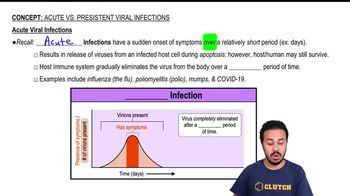Use the following choices to answer questions 7–9.
a. direct fluorescent antibody
b. indirect fluorescent antibody
c. rabies immune globulin
d. killed rabies virus
e. none of the above
Test used to identify rabies virus in the brain of a dog.
 Verified step by step guidance
Verified step by step guidance



Use the following choices to answer questions 7–9.
a. direct fluorescent antibody
b. indirect fluorescent antibody
c. rabies immune globulin
d. killed rabies virus
e. none of the above
Test used to identify rabies virus in the brain of a dog.
Use the following choices to answer questions 7–9.
a. direct fluorescent antibody
b. indirect fluorescent antibody
c. rabies immune globulin
d. killed rabies virus
e. none of the above
Test used to detect the presence of antibodies in a patient’s serum.
The 19 in COVID-19 signifies that
a. this is the 19th coronavirus epidemic.
b. this is 19th known coronavirus.
c. there are 19 strains of Betacoronavirus.
d. the virus was identified in 2019.
e. the symptoms last for 19 days.
In San Francisco, ten animal health care technicians developed pneumonia 2 weeks after 130 goats were moved to the animal shelter where they worked. Which of the following is false?
a. Diagnosis is made by a blood agar culture of sputum.
b. The cause is Coxiella burnetii.
c. The bacteria produce endospores.
d. The disease was transmitted by aerosols.
e. Diagnosis is made by complement-fixation tests for antibodies.
Complete the following table:
<IMAGE>